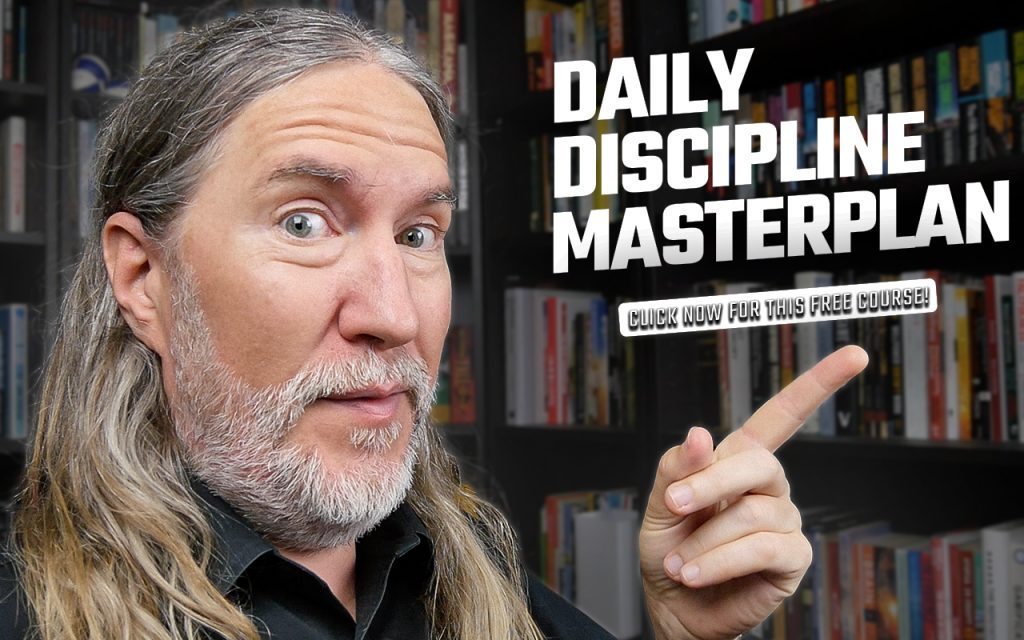A lot of people are surprised when they hear that moving meditation is totally legit.
Of course, most of us know that Qigong and Tai Chi provide calming effects that are almost indistinguishable from meditation and mindfulness practices.
But there are many more types of movement meditation than the martial arts. And often those styles have to do with either cultivating, shaping or maintaining specific kinds of energy.
Rest assured, the moving meditation benefits I’ve personally experienced from such practices and traditional are profound.
But there’s so much more to explore.
Ranging from a special kind of yoga to combining breathwork with walking, the meditations on this page provide a special kind of variety.
Better:
Each insight accelerates your understanding exactly how to link movement and meditation.
And before you know it, the mental calm and overall physical well being you can enjoy will skyrocket to even higher realms of experience.
Let’s dive in!
Mastering The Major Types Of Moving Meditation
We’ve already mentioned Qigong and Tai Chi.
I’ve taken classes in both and spent a great deal of time practicing Qigong in particular.
To sum up each of these practices in my experience, they are great for many purposes. Especially when you are experiencing “monkey mind.”
By the same token, they can involve advanced tactics and there are a lot of “differences of opinion” between teachers.
Although you’ll find many interesting debates, I generally steer clear of these. That’s based on a powerful lesson I learned from Gary Weber in Happiness Beyond Thought.
I don’t know about you, but I like a good workout when it comes to intellectual noodling. But rarely has moving my mouth helped me find the inner peace most of us seek, let alone extend it.
That’s why the following list involves types of moving meditation that invite little, if any debate. They just help us connect with energy and reduce dark thoughts and other unwanted mental phenomenon.
Instead, I want to focus on what Jalaja Bonheim calls “the rapture of movement” in The Serpent and the Wave: A Guide to Movement Meditation.
One: Walking Meditation
Walking meditation is pretty straight forward. You walk and keep mindful about the journey.
But I’ll bet you probably haven’t heard people share the following tips, followed by the variations I’ll be giving you.
For one thing, posture is really important. Many people slouch, harming their shoulders and the neck.
Poor posture leads to discomfort. Any pain inevitably makes concentration and focus more difficult.
Plus, focusing on your posture is great meditative work in and of itself.
Let’s use bullet points for the rest:
- Make sure you’re hydrated for proper joint function and not having thirst arise as a distraction
- Focus on the senses, like the air and sunlight on your skin, sounds, smells and emotions
- Don’t be picky about environments because you can literally learn to observe and appreciate the way things are any place you choose to practice the walking style of movement meditation
- Focus especially on transitions like turning corners or entering new paths so you can notice how your thoughts and physiology change
- Experiment with different rates of speed by alternating between slow, fast and medium rates of pace
Overall, walking-based meditations can be incredibly simple, and yet still pack a punch. Although meditation-expert John Kabat-Zinn suggests slowing down is probably best, we must treat concepts like “best” and “better” based on our own experimentation.
Without the benefit of comparison in your personal experience, it’s really difficult to tell. Further, many forms of meditation tend to “wear out” with repetition. So if there is “best,” it’s coming to come with variety. Changing speeds is one great way to ensure you’re getting lots of variety.
Two: Walking with the Breath
Usually we’re told to “follow the breath.”
Personally, I’ve found it much more effective to manipulate my breathing during movement meditations. And sticking with our theme of variety, changing how you manipulate the breath provides all kinds of mindfulness effects.
I learned to walk with the breath in Systema. One incredibly powerful exercise involves linking your breath with your steps.
Basically, you practice a progression, starting with one inhale per step. Like this:
- 1 step = 1 inhale
- 1 step = 1 exhale
- Repeat 5×
When you’ve taken 10 steps based on this pattern, increase the amount of steps while maintaining a single inhale. In other words, now you take two steps as you inhale once and then exhale over two steps. Then increase the number of steps you take while inhaling.
Keeping building until you complete 10 steps across a single inhale and 10 steps across a single exhale. Then reverse the process by moving back down the number of steps from 10 to 1.
Three: Walking Meditation with Breath Withholding
For another variation, you can include breath holding.
However, please consult a doctor before putting this one into action. Doing so is very important with anything that involves holding your breath.
Once you’ve gotten your doctor’s okay, the process is simple:
- 1 step = 1 inhale
- 1 step = 1 step of holding oxygen in your lungs
- 1 step = 1 exhale
- Repeat 5×
- Increase the steps progressively so that you’re holding your breath for longer periods of time
Although this practice is controversial, some studies have shown that it helps with longevity.
Personally, I do it at my own risk and because I enjoy the mindful benefits it creates for me, especially when linked to movement meditation.
Four: Mudras
No one ever said that you have to move your whole body to enjoy the benefits of movement meditation.
Dr. Gary Weber shares one of the best mudra meditation trainings I’ve seen:
It helped me a lot.
Five: Micro-flexing and Shavasana
Probably one of my favorite movement meditations involves the most minimal movements of all.
These are sometimes called progressive muscle relaxation exercises. Paired with breathing meditation and performing mudras with simple personal mantras, I find them peace-inducing.
Here’s a simple way to get started:
1. Point your toes upward and hold—then release.
2. Point your toes towards the wall and hold—then release. 3. Flex your calves. Keep releasing after every flexion.
4. Flex your thighs.
5. Flex your buttocks.
6. Flex your stomach muscles, lower back muscles, chest and shoulders (all core muscles).
7. Flex your hands, forearms and upper arms.
8. Flex your neck, your cheeks and the muscles surrounding your eyes.
For the shavasana part (which is often called corpse pose), spend a bit of time with all movement removed following the progressive muscle relaxation.
The challenge here is to keep yourself from moving, ideally as long as possible. With serious practice, you’ll find that there’s a lot of moving meditation that goes on when you’re trying to keep yourself still. This practice can help you enjoy many nondual experiences.
Six: Change Places
Often meditation instructors make it seem like you need to keep still when meditating.
For myself, I like to change places quite a bit.
In other words, I’ll meditate for awhile on the edge of my bed, then move to the floor.
And when I meditate in the sun, I’ll sit for 15 minutes in one direction before switching for another 15 minutes. This lets my front and my back get as much Vitamin D-generating sunlight as possible.
This strategy splits the difference between sitting meditation and moving meditation. It’s a wonderful practice to keep in the moment even though you’re transitioning.
Seven: Sphere of Protection
I spent a couple of months exploring the idea of casting a sphere of protection.
This form of movement meditation appears in many traditions, but I personally did not take the idea of “casting a magic circle” very seriously.
What interested me most in the long-term experiment was seeing how it would make me feel and what ideas it would generate.
I based my practice loosely on a teaching from John Michael Greer. I was skeptical at first, but found my adaptation produced many interesting effects.
Here’s the basic process I followed in what became a combination of Qigong and memory-based meditation:
- Face the south
- Bring the palms together
- Salute the sky (hands upward)
- Salute the earth (hands downward)
- Salute the water (hands parted with focus on the left hand)
- Salute the air and wind (hands parted with focus on the right hand)
- Final return to palms together and basic Qigong movements
I found this practice very nice. The only reason I stopped is that I found the practice not nearly as strong as my other approaches.
I believe the reason why is that the sphere of protection seems to assume a kind of duality, as if I am somehow “separate” from the elements. I did not like this idea much and I prefer a nondual assumption that there is nothing to be protected from when all is one.
Plus, karma yoga is one of my preferred practices, which simply lets go of the outcome of things. That is a kind of mental “movement” that ultimately requires being released from prayer-like activities. They all seem to create attachments in a context in which I wish to be free of anything that requires even the illusion of an outcome.
Eight: Basic Asanas
In Happiness Beyond Thought, Gary Weber teaches some very simple asanas.
I find that they produce incredibly powerful states of calm and focus.
Very simply, my favorites involve stretching to the sky before touching my toes, getting into a basic fetal pose, and adding some bowing into and out of that pose.
These movements take just a few moments and produce many wonderful benefits that have been well-studied. The NIH lists a bunch of recent scientific reports that demonstrate the validity of this form of meditation.
Moving Meditation Benefits
There are so many positives when it comes to moving meditation that it makes my jaw drop.
Here’s just a few:
- Reduced stress
- Improved mental and emotional health
- Physical health benefits
- Improved sleep
- Physical balance improvements
- Some pain management benefits
Plus, if you’re also doing some form of memory-based meditation, you’re also getting a great mental workout on top of the benefits you’re giving your body.
I share details on developing the memory-based meditation skills in my book, The Victorious Mind.
And if you’re in any way concerned that you don’t have the mental discipline needed to take up any of these practices, please consider completing my course on developing positive habits.
I fought for these skills tooth and nail. It was so worth it, and this free course contains all of my best tips and strategies from the journey:
Make no mistake:
Developing daily discipline isn’t easy.
But when someone is straight with you, it certainly can be.
And that’s why I work so hard on this blog to give so much of what I know away for free.
Learning what it really takes and practicing deliberately saved my life.
Moving meditations were key to the transformations I needed and I hope my findings have helped you out.
So what do you say?
Are you ready to experiment with some of the strategies I’ve shared with today?
Keep exploring and I hope to learn what you discover along the way!


